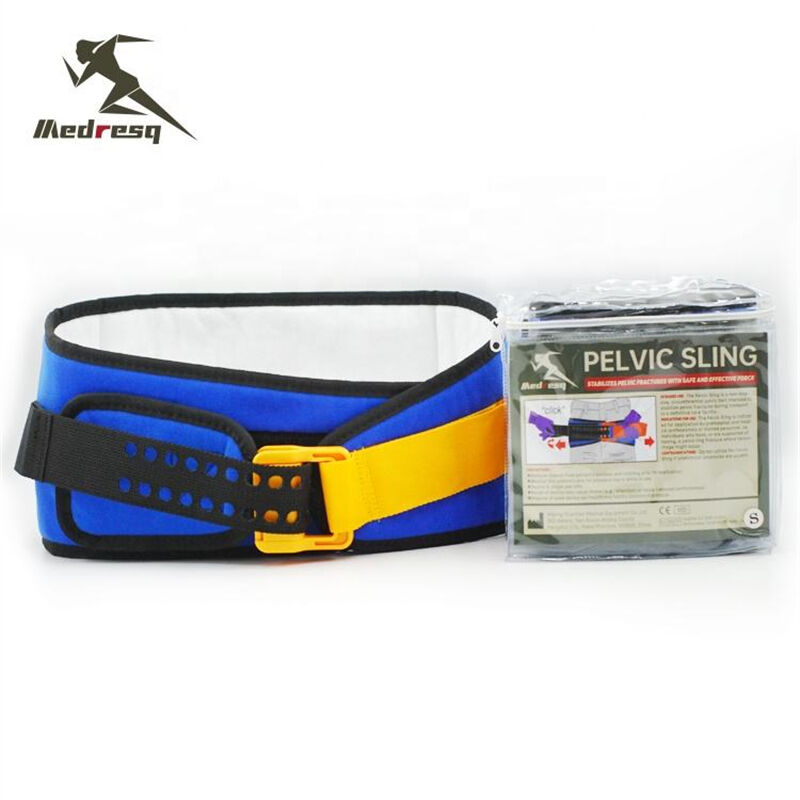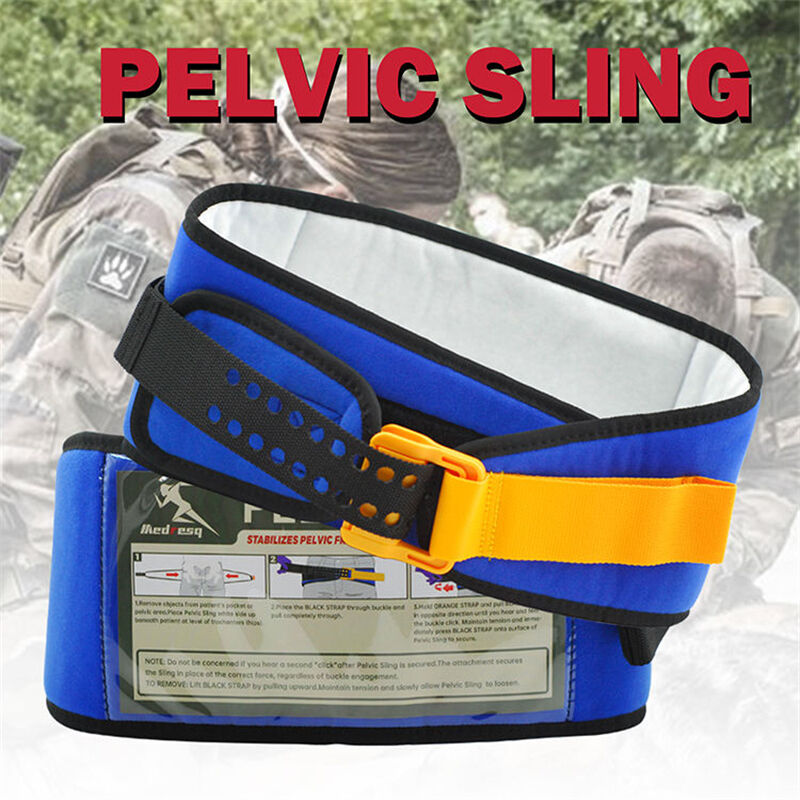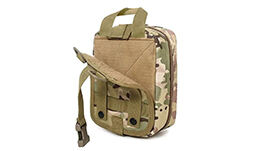Pelvic Sling: The Ultimate Guide to Trauma Stabilization & Fracture Management
Pelvic fractures are among the most severe injuries in trauma care, often leading to life-threatening hemorrhage and long-term mobility complications. A Pelvic Sling (or pelvic binder) is a critical medical device designed to stabilize pelvic fractures, control bleeding, and prevent further damage during transport. At Medresq, we specialize in high-performance, customizable pelvic slings trusted by emergency responders, military medics, and trauma centers worldwide.
This guide covers:
✔ What a Pelvic Sling is and when it’s needed
✔ How it works to stop bleeding and stabilize fractures
✔ Key differences between pelvic slings vs. sheets vs. binders
✔ Why Medresq’s custom designs outperform standard models
✔ Step-by-step application for emergency & pre-hospital use
By the end, you’ll understand why Medresq’s Pelvic Slings are the gold standard for trauma care.
What Is a Pelvic Sling?
A Pelvic Sling is a non-invasive stabilization device that:
✔ Compresses the pelvis to reduce fracture displacement
✔ Minimizes internal bleeding by closing pelvic volume
✔ Prevents nerve & vascular damage during transport
When Is a Pelvic Sling Used?
· High-Impact Trauma – Car crashes, falls from height, industrial accidents
· Battlefield & Tactical Medicine – Gunshot wounds, blast injuries
· Emergency Medicine – Suspected pelvic fractures in ER triage
· Disaster Response – Earthquakes, mass casualty incidents
Types of Pelvic Stabilization Devices
Not all pelvic stabilizers are equal. Compare key options:
1. Pelvic Slings (Medresq’s Specialty)
Adjustable straps with buckles for precise pressure
Reusable & easy to apply in emergencies
Superior hemorrhage control vs. improvised solutions
2. Pelvic Sheets (Improvised Solution)
Simple folded sheet tied around the pelvis
Limited pressure control – risks over/under-tightening
Single-use only
3. Pneumatic Pelvic Binders
Inflatable designs for circumferential pressure
Used in hospitals (less practical for field use)
Higher cost, complex application
Medresq’s slings combine the best of all: rapid application, adjustable pressure, and reusability.

Why Choose Medresq’s Pelvic Slings?
✔ Military-Grade Durability
Ripstop nylon webbing withstands extreme conditions
Aircraft-grade aluminum buckles won’t fail under tension
✔ Precision Pressure Control
Ratchet or hook-and-loop straps allow millimeter adjustments
Prevents over-compression (which can worsen injuries)
✔ Fast Application (<30 Seconds)
Color-coded straps for intuitive use under stress
One-size-fits-most (adjustable for pediatric to bariatric patients)
✔ Trusted by Trauma Teams
CoTCCC & TCCC compliant for combat medics
Used in Level 1 Trauma Centers globally
How to Apply a Pelvic Sling Correctly
Improper application can be fatal. Follow these steps:
Step 1: Assess for Pelvic Fracture
Signs: Severe hip pain, leg length discrepancy, inability to walk
Mechanism: High-energy impact (e.g., car crash, fall)
Step 2: Position the Sling
Center the pad over the greater trochanters (hip bones)
Wrap straps under the thighs, not the abdomen
Step 3: Tighten Gradually
Pull straps until the pelvis feels stable but not crushed
Check distal pulses to ensure circulation isn’t cut off
Step 4: Secure & Document
Lock buckles and note time of application
Do NOT remove until imaging confirms stability
Pro Tip: Practice with our training slings to perfect technique before emergencies.

Who Needs a Pelvic Sling?
Our slings are essential for:
1. EMS & First Responders
Ambulances, fire departments, wilderness rescue
2. Military & Tactical Medics
Battlefield trauma kits for hemorrhage control
3. Hospitals & Trauma Centers
Emergency stabilization before surgery
4. Disaster Preparedness Teams
Earthquake, hurricane, and mass-shooting response
How to Choose the Best Pelvic Sling
Consider these factors:
1. Speed of Application
Under 30 seconds is ideal for field use
2. Adjustability
Ratchet systems > Velcro for precise pressure
3. Reusability
Medresq’s slings withstand 100+ uses
4. Compliance with Guidelines
CoTCCC, WHO, and ATLS standards
5. Custom Branding Options
Add your agency’s logo or color scheme

Why Trust Medresq for Pelvic Stabilization?
We offer:
· Battle-tested designs used in combat zones
· Custom sizing for unique needs
· Bulk discounts for hospitals & agencies
· 24/7 expert support for medical teams
A Pelvic Sling is a lifesaving tool for stabilizing fractures and controlling hemorrhage. Medresq’s slings provide unmatched speed, adjustability, and durability—making them the top choice for trauma professionals.
Need pelvic stabilization devices? Contact Medresq today for custom solutions and volume pricing!
Hot News
-
Advancements in Medical Structures: Enhancing Emergency Response and Patient Care
2025-06-13
-
The Vital Role of Stretchers in Emergency Medical Care
2025-03-07
-
DEVELOPMENT AND PROSPECT OF BATTLEFIELD INDIVIDUAL FIRST AID KIT
2025-02-20
-
Enhancing Emergency Response: The Role of IFAKs in Trauma Care
2025-02-20
-
Windlass Rod Tourniquet: An Essential Component in Emergency Medical Response
2025-02-13
-
The Windlass Rod Tourniquet: A Lifesaving Device in Emergency Medical Response
2025-02-13
-
Decompression Needle: Essential Design, Usage, and Future Directions in Trauma Care
2024-11-29
 EN
EN
 FR
FR
 DE
DE
 IT
IT
 JA
JA
 KO
KO
 RU
RU
 ES
ES
 AR
AR
 BG
BG
 HR
HR
 DA
DA
 NL
NL
 FI
FI
 EL
EL
 NO
NO
 PL
PL
 PT
PT
 RO
RO
 SV
SV
 TL
TL
 ID
ID
 SR
SR
 UK
UK
 VI
VI
 SQ
SQ
 TH
TH
 TR
TR
 AF
AF
 MS
MS
 CY
CY
 IS
IS
 HY
HY
 AZ
AZ
 KA
KA
 MN
MN
 MY
MY
 KK
KK
 UZ
UZ
 CS
CS



